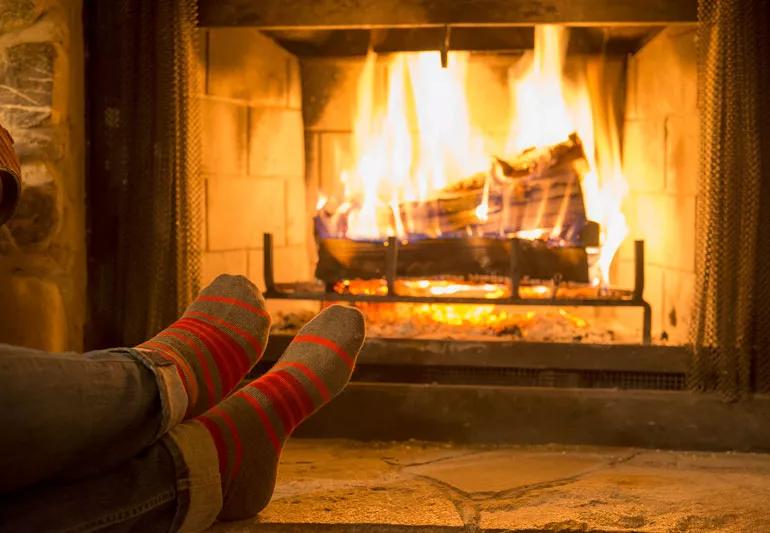Make sure your wood has been split and stored for at least 6 months

When the weather outside turns colder, there’s nothing cozier than a warm, crackling fire in your fireplace and a steaming cup of tea in your hands. But a wood-burning fire in your fireplace can cause health problems, especially if you or a family member has a history of lung disease.
Advertisement
Cleveland Clinic is a non-profit academic medical center. Advertising on our site helps support our mission. We do not endorse non-Cleveland Clinic products or services. Policy
There are potentially serious adverse health effects when you breathe in smoke from wood fires in your home fireplace. That’s because smoke from these fires contains small particles that can get into your eyes and respiratory system and the result can be a cough, burning eyes, a runny nose and illnesses such as bronchitis, says allergist and immunologist Sheila Cain, MD.
“Small particles less than 10 micrometers in diameter pose the greatest health problems because they can get deep into the lungs,” says Dr. Cain. “Some may even get into the bloodstream.”
Among these particles are fine particles, which are smaller than 2.5 micrometers in diameter, and these fine particles can affect your lungs. Wood smoke can also contain several toxic substances such as benzene, formaldehyde, acrolein and methane.
“It’s important to limit your exposure to smoke,” says Dr. Cain. “Exposure to wood-burning smoke can cause asthma attacks and bronchitis and also can aggravate heart and lung disease.”
People with heart or lung diseases, diabetes, children and older adults are the most likely to be affected by breathing particles in the air. Wood smoke has health effects like lung cancer, wheezing and premature death, too.
Advertisement
“If someone living in your home has a history of lung disease, such as asthma, try to avoid using of wood-burning fireplaces and wood-burning stoves,” says Dr. Cain. “Even healthy people may experience temporary symptoms from exposure to elevated levels of air particles that a wood fire creates.”
In addition to the fireplace smoke that can be released inside the home, research has shown that up to 70% of smoke released via the chimney re-enters your home.
If you’re using a fireplace and smell smoke in your home, the fireplace probably isn’t working as it should, according to the U.S. Environmental Protection Agency (EPA). If you do decide to use your wood-burning fireplace, the EPA has these suggestions for safer fires:
“If you’re thinking about switching to a gas fireplace to avoid the health hazards of a wood-burning fireplace, gas fireplaces also may affect indoor air quality,” she says. “They emit nitrogen dioxide, which is a respiratory irritant.”
The American Lung Association recommends using natural gas stoves and heaters instead of wood-burning fireplaces to heat your home or water. If you do go this route, make sure they’re fully vented outdoors to keep pollutants out.
One way you can reduce your health risks with burning wood in your home is to use newer fireplace inserts. Those manufactured after 1992 are significantly cleaner-burning than older models because of federal air quality regulations that went into effect at that time, according to the EPA.
If these newer appliances are properly installed, well-maintained and used correctly, they can improve air quality – and consequently, help reduce risks to your health.
Advertisement
Learn more about our editorial process.
Advertisement

Breathing in toxic smoke can lead to serious health problems

Breathing in unhealthy air can harm your lungs, heart and more

The type, quantity and duration of your exposure determines your risk of injury or illness

Bottom line? Dress warm, be careful and plan ahead to get the most out of the season

Establish rules and have a safety plan in place

An ER doc shares tips for being careful while having fun

When something like food or drink goes down your windpipe rather than your esophagus, it can cause coughing and sometimes choking

There’s no safe way to find, handle, repair or remove asbestos yourself — it’s always a job for a professional

If you’re feeling short of breath, sleep can be tough — propping yourself up or sleeping on your side may help

If you fear the unknown or find yourself needing reassurance often, you may identify with this attachment style

If you’re looking to boost your gut health, it’s better to get fiber from whole foods